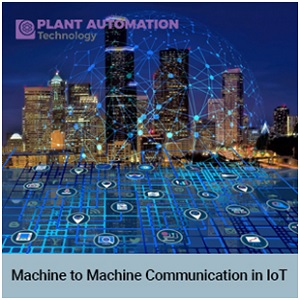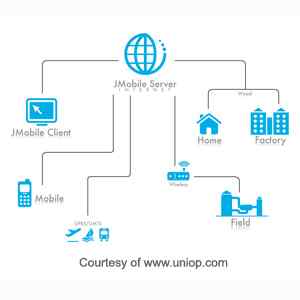Machine to Machine Communication in IoT

M2M/IoT devices are wireless networks that connect to the internet without human interaction. In the era of the Internet revolution, they are the next generation of devices connected to the Internet. These devices are also known as "active communication devices." Using sensors and communication modules, M2M devices are able to send data wirelessly or via wired networks.
M2M connectivity provides quick, secure internet access from any location at any speed. It functions both inside and outside. Numerous M2M gateways connect these devices to the network domain. PAN (Personal Area Network) and LAN technologies are just two examples of M2M area networks. IoT & M2M, collaboration offer extensive storage, resources, and security. The following are only a few M2M communication characteristics:
- Numerous brief sessions
- Small payload
- It has a wide range of features (such as battery capacity) and
- A wide range of QoS requirements (e.g., delay).
By connecting devices over cloud networks, the Internet of Things (IoT) builds on the fundamental ideas of M2M.
|
Also Read: M2M IoT Applications in Supply Chain and Logistics |
In general, these two technologies differ in the following ways:
| Basis | M2M | IoT |
| Connection Type Used | Simple device-to-device communication is often done at the client site with embedded software. | IP networks are used by devices to communicate. |
| Communication | Direct interaction between machines | Automation of IoT sensors. |
| Used Communication Protocol | both conventional protocols and modern communication methods. | Internet protocols include Telnet, HTTP, and FTP. |
| Intelligence | Observation of intelligence to some extent. | Objects are responsible for decision-making. |
| Technology | Hardware-based. | hardware and software-based. |
| Data Sharing | exchange of data exclusively between communicating parties. | Data sharing among different applications to enhance the user experience. |
| Scope | deployed in a closed system. | It connects to a larger network. |
| Open API Support | Open APIs are not supported. | supports open API integration. |
| Internet | Internet connectivity is not required for devices. | It is necessary for you to have an active internet connection. |
Benefits:
This M2M is easy to handle and can function through cellular networks. It helps smart things communicate without the need for human contact. IoT network security and privacy issues are addressed via the M2M interaction function. It is possible to collect, process, and secure large amounts of data.
Negative aspects
However, the usage of cloud computing in M2M limits flexibility and originality. Major issues here include data ownership and security. It is difficult to achieve compatibility between cloud and M2M IoT solutions. A dependable internet connection is required for M2M connectivity.
Examples:
- The smart washing machine sends notifications to the owners' smart devices after the washing or drying of the clothes is finished.
- Smart meters track the amount of energy consumed in homes or businesses and notify the owner automatically.
Applications
M2M is predicted to revolutionize many industries, companies, and services by providing unprecedented automation and intelligence. In addition to heavy machinery, it can be used for jet engines, bus fleets, home appliances, health monitoring, smart grids, smart water, robots, conveyor belts on factory floors, irrigation and tractors on farms, heavy equipment, and hand drills, among other things. Providing citizens with more effective and efficient services can have significant economic and social benefits.
|
Also Read:Optimizing Production with AI and Machine Learning in Manufacturing |
SUMMARY
The adoption of M2M technology will be a better choice if
- It requires direct contact.
- This requires swift and reliable execution of the few available machine communication methods.
- It must function both with and without a Wi-Fi connection.
- doesn't prioritize scalability as a top priority.
Using IoT will be preferable if the application-
- It requires real-time device synchronization.
- It requires scalability for numerous users and devices.
- demands that its data and hardware be interoperable with a variety of standards.
- requires access to a strong and reliable Wi-Fi connection.











